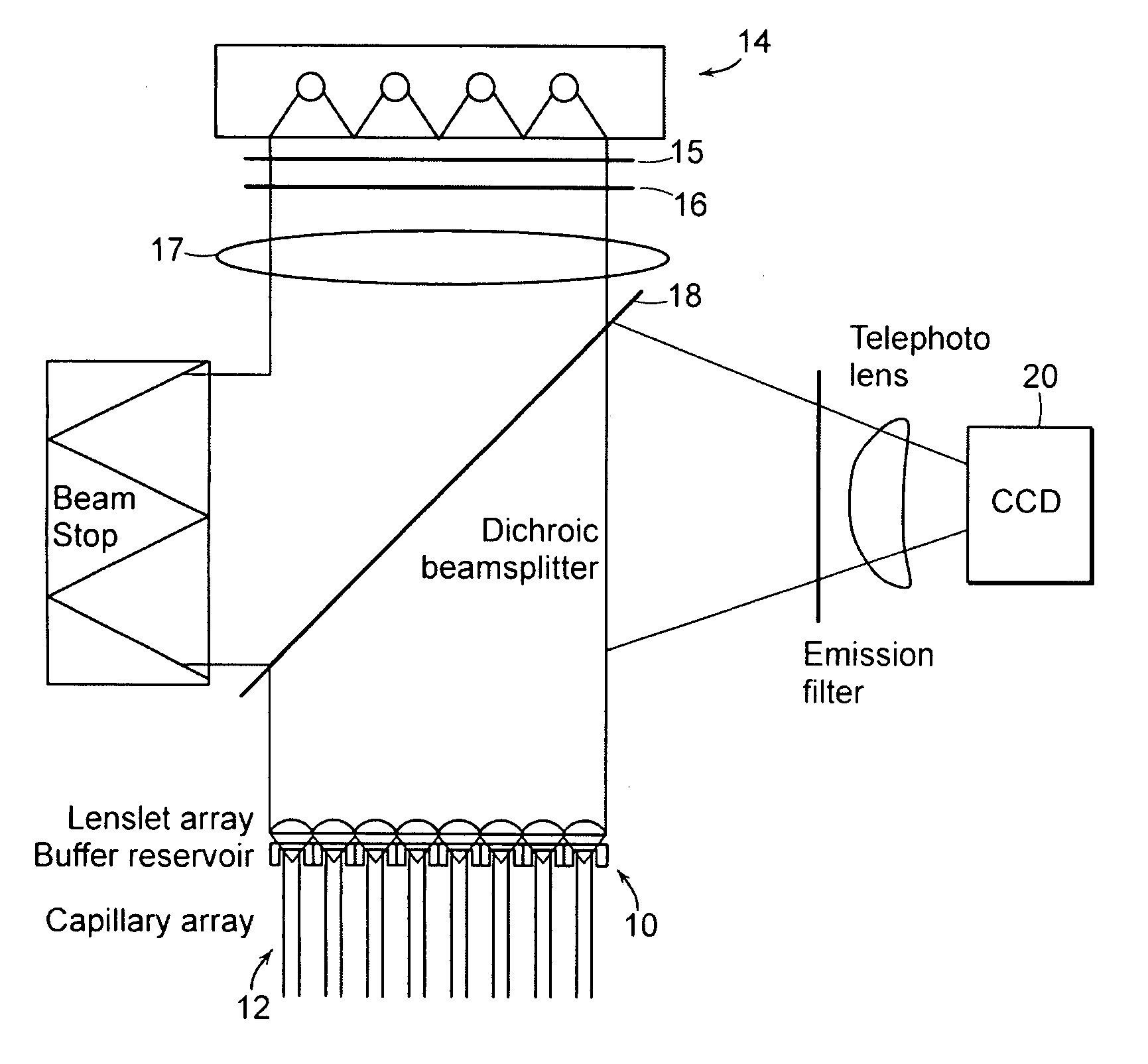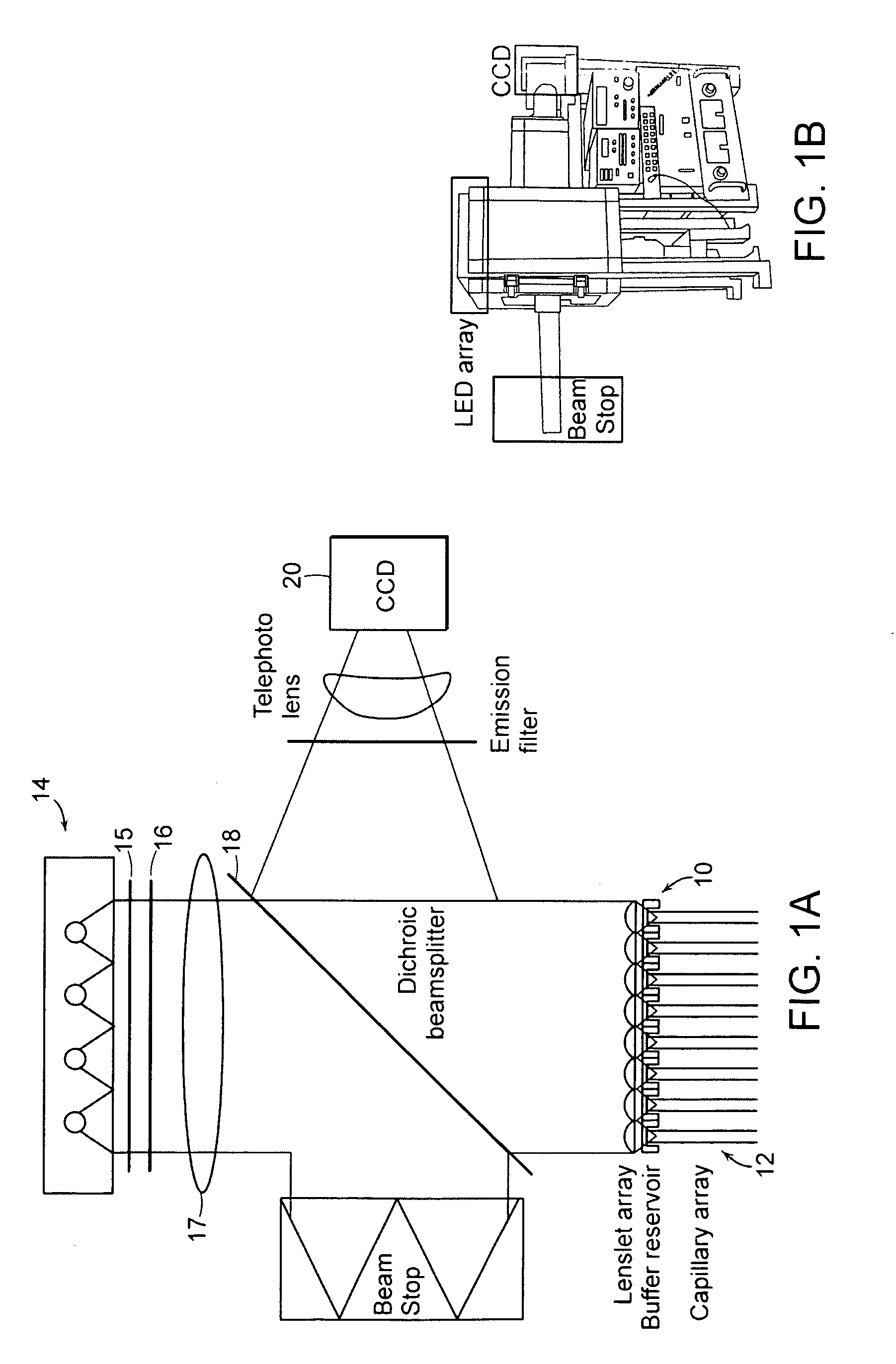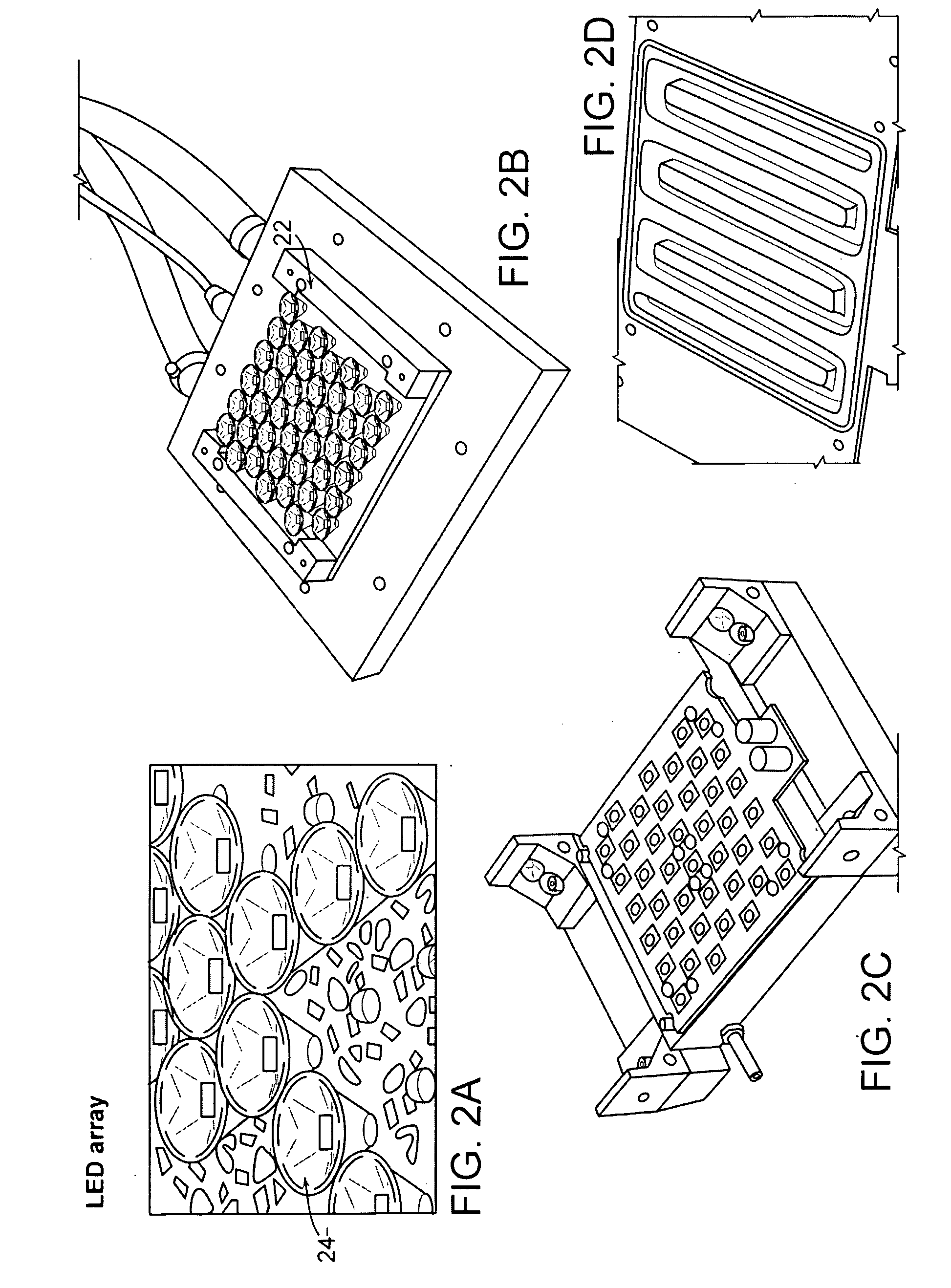End-column fluorescence detection for capillary array electrophoresis
a capillary array and fluorescence detection technology, applied in the direction of fluorescence/phosphorescence, liquid/fluent solid measurement, peptides, etc., can solve the problems of inability to detect the intensity of the array, the number of rows that can be illuminated with sufficient optical intensity is limited, and the intensity incident on each successive row is exponentially decreased
- Summary
- Abstract
- Description
- Claims
- Application Information
AI Technical Summary
Benefits of technology
Problems solved by technology
Method used
Image
Examples
Embodiment Construction
[0039] Various techniques of optical identification or analysis of materials entail the excitation of a sample with light of one wavelength (or band of wavelengths) and detection of subsequent emission at the same or other wavelengths. Such techniques include scattering modalities such as Raman spectroscopy, as well as fluorescence, where a target molecule is labeled with a fluorophore (such as the Alexa 488 dye that is used herein for descriptive purposes and without limitation) that emits light at a characteristic emission wavelength when the fluorophore is excited by exciting radiation of equal or greater energy to the emitted fluorescence.
[0040] Some basic elements that may be employed in the practice of the present invention are now introduced with reference to FIG. 1A, where an apparatus for optically interrogating a plurality of loci is shown. The loci to be interrogated lie substantially within a focal plane 10 that encompasses, for example, the ends of an array of substant...
PUM
| Property | Measurement | Unit |
|---|---|---|
| wavelength | aaaaa | aaaaa |
| diameter | aaaaa | aaaaa |
| diameter | aaaaa | aaaaa |
Abstract
Description
Claims
Application Information
 Login to View More
Login to View More - R&D
- Intellectual Property
- Life Sciences
- Materials
- Tech Scout
- Unparalleled Data Quality
- Higher Quality Content
- 60% Fewer Hallucinations
Browse by: Latest US Patents, China's latest patents, Technical Efficacy Thesaurus, Application Domain, Technology Topic, Popular Technical Reports.
© 2025 PatSnap. All rights reserved.Legal|Privacy policy|Modern Slavery Act Transparency Statement|Sitemap|About US| Contact US: help@patsnap.com



